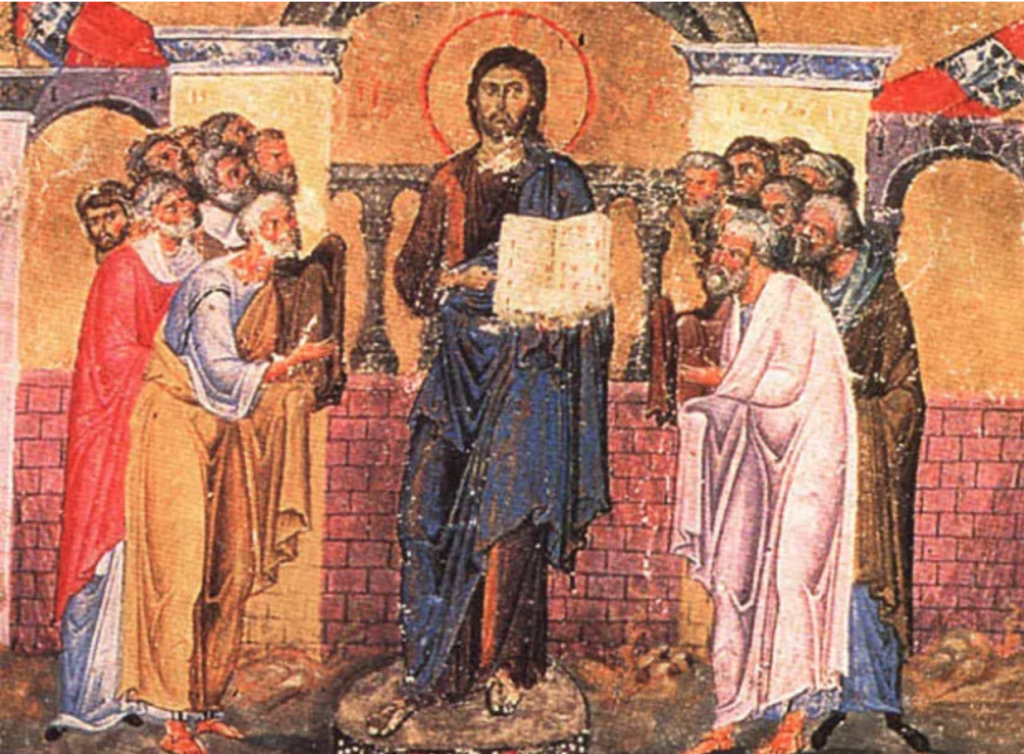
The first day of the Church New Year is also called the beginning of the Indiction. The term Indiction comes from a Latin word meaning, “to impose.” It was originally applied to the imposition of taxes in Egypt. The first worldwide Indiction was in 312 when Emperor Constantine (May 21) saw a miraculous vision of the Cross in the sky. Before the introduction of the Julian calendar, Rome began the New Year on September 1.
According to Holy Tradition, Christ entered the synagogue on September 1 to announce His mission to mankind (Luke 4:16-22). Quoting Isaiah 61:1-2), the Savior proclaimed, “The spirit of the Lord is upon me; because He has anointed me to preach the gospel to the poor; He has sent me to proclaim release to captives, and recovering of sight to the blind, to set at liberty those who are oppressed, to proclaim the acceptable year of the Lord…” This scene is depicted in a Vatican manuscript (Vatican, Biblioteca. Cod. Gr. 1613, p.1).
Tradition says that the Hebrews entered the Promised Land in September.
The Biblical-based traditions and Church customs regarding the Ecclesiastical New Year continue to be honoured, especially by the Ecumenical Patriarchate of Constantinople.
Each year, on September 1st, members of the Holy and Sacred Synod, led by the Ecumenical Patriarch, gather at the Patriarchal Church of St. George the Great Martyr in the Phanar to concelebrate the Divine Liturgy, venerate the Holy Panagia Pammakaristos Icon and proclaim the New Year. They also sign the Patriarchal and Synodal Tome for the Indictus, an ancient practice dating back to the time of Constantine the Great.


